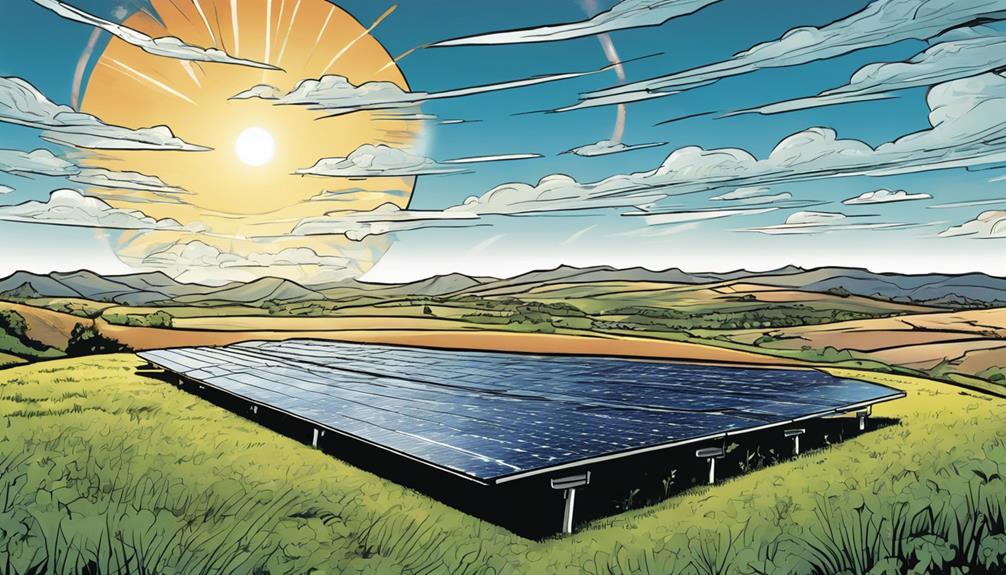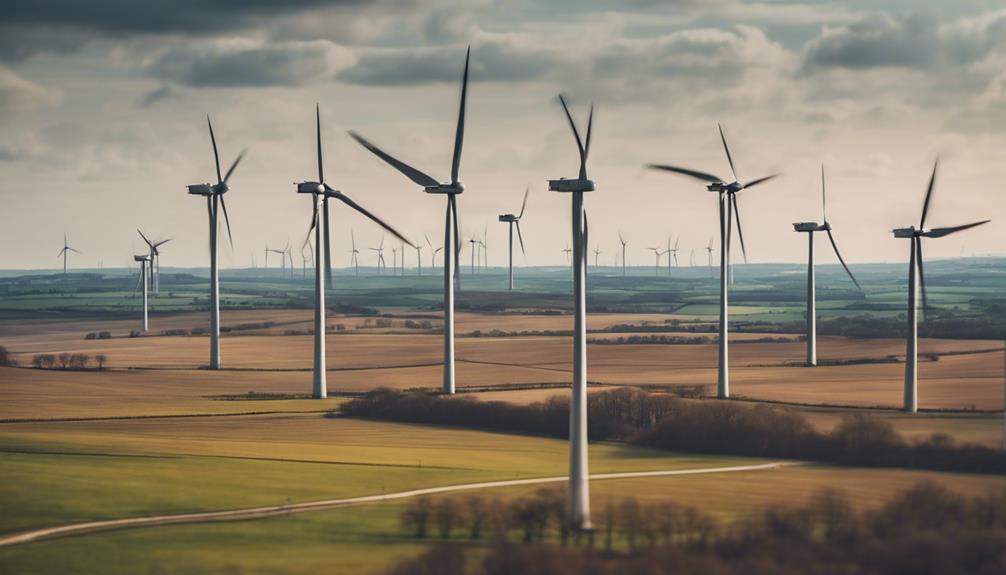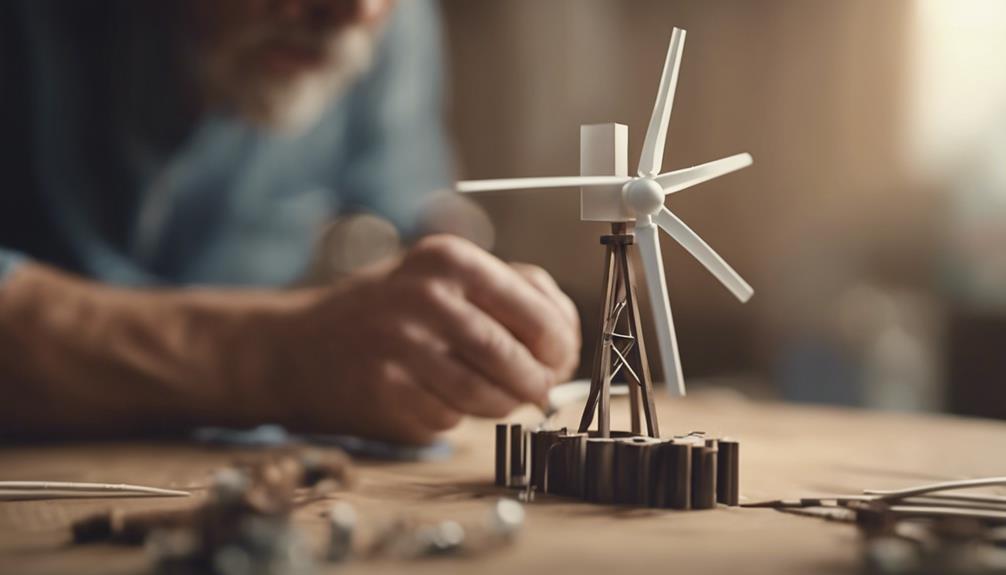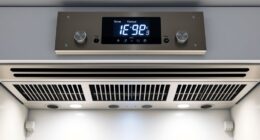By incorporating a wind turbine in your garden, you're not only harnessing a clean and sustainable power source, but also taking a significant step towards reducing your carbon footprint and securing long-term cost savings. You'll reduce your reliance on traditional power sources and enjoy a steady flow of renewable energy. With careful planning, you can overcome common urban installation challenges and maximize your energy output. Now that you've got the benefits, it's time to explore the details that'll make your wind turbine garden a reality.
Key Takeaways
- A Wind Turbine Garten transforms natural wind into a clean, sustainable power source, reducing reliance on traditional energy providers.
- It provides a steady flow of renewable energy with consistent wind supply, promoting sustainability and reducing carbon emissions.
- By harnessing wind energy, you can secure long-term cost savings and decrease your electricity bills.
- Wind Turbine Garten can be integrated with solar panels for continuous energy supply, increasing reliability and energy efficiency.
- It's an eco-friendly way to generate power, reducing environmental disturbances and promoting a cleaner, healthier environment.
Harnessing Wind Energy Benefits
By installing a wind turbine garten, you can effectively harness wind energy benefits, transforming a natural resource into a clean and sustainable power source for your home.
This residential wind turbine generates clean electricity, reducing your reliance on traditional power sources and lowering your electricity bills. With a consistent wind supply, you can enjoy a steady flow of renewable energy, making it an attractive option for energy generation.
The benefits don't stop there – wind turbines in gartens also promote sustainability, reducing carbon emissions and minimizing ecological impact. As you invest in a wind turbine garten, you're not only contributing to a greener lifestyle, but also securing long-term cost savings. Furthermore, by harnessing the natural power of the wind, you can take advantage of consistent energy production. This means that even in areas with lower average wind speeds, careful wind speed calculations can optimize the efficiency of your turbine. This ensures a reliable source of renewable energy for years to come.
With renewable energy at your fingertips, you'll be doing your part for the environment while enjoying the financial perks.
Evaluating Your Property's Potential
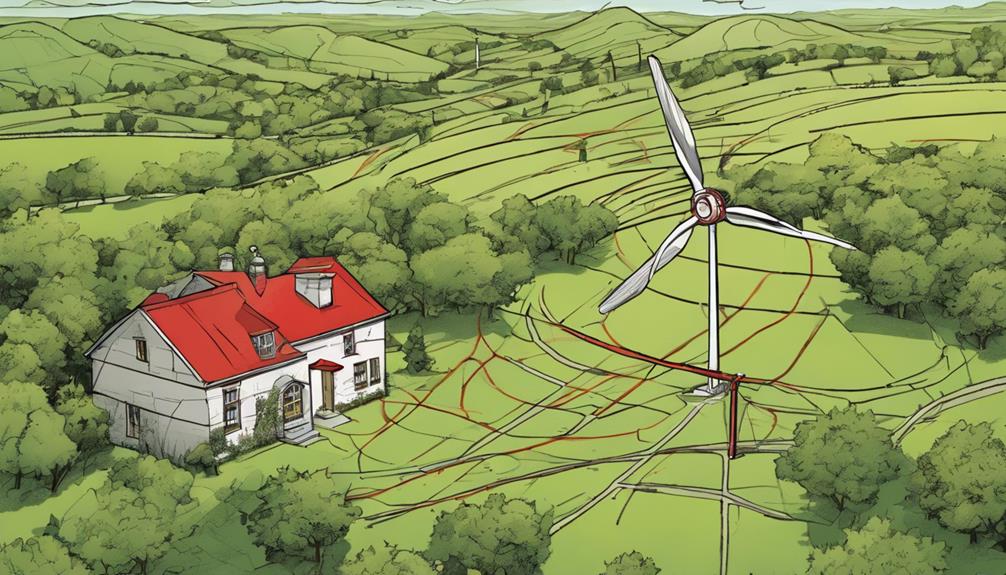
As you consider installing a wind turbine on your property, you'll need to assess your land's potential by evaluating its wind resource, physical layout, and zoning regulations.
You'll also want to think about how the turbine will affect your neighbors and your property's visual appeal.
Wind Resource Assessment
You'll need to assess your property's wind conditions to determine its potential for generating power with a wind turbine system. This evaluation is critical to understanding if a wind turbine will be effective on your property.
To do this, you'll need to measure wind velocity and direction at various heights using tools like anemometers. Wind maps can also offer valuable insights into the average wind speed and consistency in your area.
Take into account factors like obstacles, terrain, and nearby structures that can influence wind flow, as these can affect the performance of your wind turbine. Generally, higher average wind speeds indicate better potential for a wind turbine system.
It's important to seek advice from a professional to carry out a thorough wind resource assessment, as they can provide accurate data and assist you in making an informed decision.
Through a detailed assessment, you'll have a clear understanding of your property's wind conditions and can determine if a wind turbine system is suitable for you.
Site Evaluation Criteria
After assessing your property's wind resource, it's time to evaluate its potential for hosting a wind turbine by examining specific site criteria that can make or break the system's effectiveness.
You'll need to assess the wind speed, direction, and consistency on your property to determine if it's suitable for a wind turbine. Consider obstacles like trees, buildings, and terrain that could affect wind flow and turbine efficiency. Use tools like anemometers and wind maps to get a better understanding of your property's wind patterns. Aim for unobstructed, open spaces with consistent wind patterns for best energy generation.
A thorough site evaluation is essential to optimize your property can support a wind turbine. Don't try to do it alone – seek professional guidance to conduct a thorough assessment. They'll help you identify potential issues and determine the best location for your wind turbine.
With the right site evaluation, you can ensure your wind turbine operates at its peak, generating clean energy and saving you money on your energy bills.
Neighborhood Impact Analysis
Evaluating your property's potential for a wind turbine installation involves considering the impact it may have on your neighborhood, including the people and properties surrounding it. To ensure a smooth installation process, you'll want to assess the neighborhood impact of your wind turbine.
| Impact Factor | Assessment Method | Considerations |
|---|---|---|
| Noise Levels | Manufacturer's specs, distance from homes | Decibel levels, proximity to residential areas |
| Visual Impact | Zoning regulations, neighbors' views, visual simulations | Turbine appearance, potential obstruction of views |
| Community Reactions | Consultations, surveys, town hall meetings | Addressing concerns, gaining support |
| Property Value | Real estate trends, local agent consultation | Potential impact on property value, resale |
Understanding Turbine Types and Designs
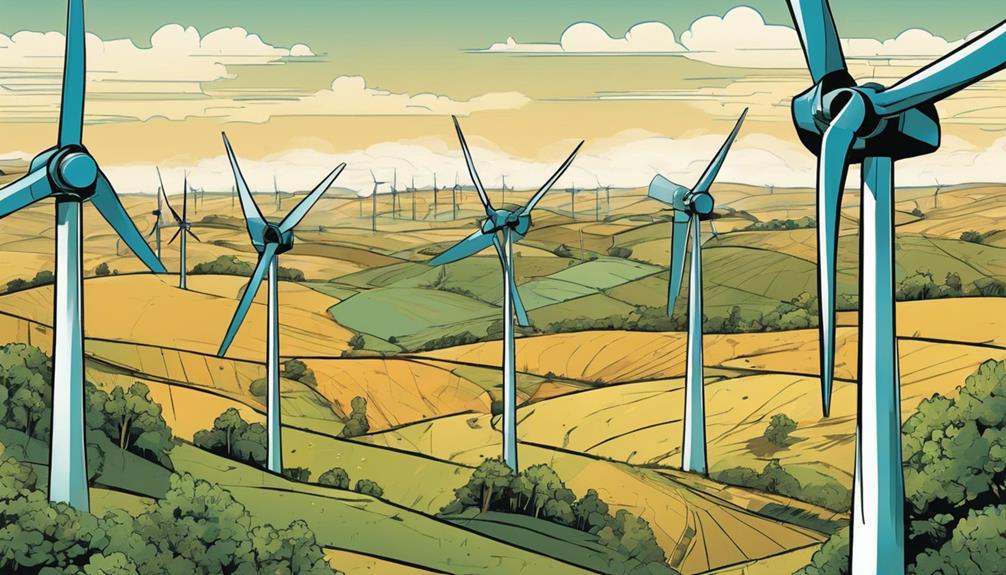
As you explore the world of wind turbines, you'll likely come across different types and designs that cater to specific needs and environments.
You might be wondering what makes bladeless turbines advantageous or what unique features Vertical Axis Wind Turbines (VAWTs) offer.
Let's take a closer look at these innovative designs and their benefits.
Bladeless Turbine Advantages
You'll appreciate the innovative design of bladeless turbines, which ditch traditional spinning blades for a sleek, vertical oscillating cylinder that generates electricity efficiently.
These turbines are perfect for urban and residential areas, where minimal visual and noise impact are essential. Unlike traditional turbines, bladeless models won't disrupt the peaceful atmosphere of your neighborhood. Plus, they complement solar panels, providing a continuous energy production solution for homeowners who want to reduce their carbon footprint.
Bladeless turbines offer sustainable energy options, aiming to reduce environmental disturbances while generating clean energy.
With plans to scale up to larger capacities, these innovative turbines have the potential to make a significant impact on the environment. Energy companies have already approved bladeless turbine models, such as Vortex Bladeless Turbines, demonstrating their potential for future energy innovation.
Unique VAWT Designs
Beyond the innovative bladeless turbine design, you can explore unique Vertical Axis Wind Turbine (VAWT) designs that cater to specific urban and residential needs. VAWTs are perfect for these areas since they can thrive in turbulent wind patterns and inconsistent wind directions, offering flexibility in placement.
What's more, these turbines come in a range of innovative designs that address concerns like visual impact and noise pollution.
For instance, the Alpha 311 turbine is designed to minimize visual obstruction, making it an ideal choice for residential areas. On the other hand, the SkySails Airborne Wind Energy Systems take wind power to new heights, literally. This cutting-edge technology uses kites to generate electricity at high altitudes, reducing the environmental impact of traditional wind turbines.
As you explore the world of VAWTs, you'll discover a future filled with possibilities for improved efficiency and reduced environmental impact. By embracing these unique designs, you can create a more sustainable urban and residential landscape, one wind turbine at a time.
Overcoming Urban Wind Turbine Challenges

You're likely aware that urban areas pose unique challenges for wind turbine installations. One significant hurdle to urban wind turbine adoption is managing the complex interplay of turbulence, reduced wind speeds, and noise concerns that characterize urban environments.
Turbulence from buildings disrupts wind flow, impacting the efficiency of urban wind turbines. Densely packed urban settings slow wind speeds, making electricity generation challenging for turbines. Noise concerns in cities limit suitable locations for wind turbines, affecting installation possibilities.
To overcome these challenges, you'll need to navigate turbulent wind flow, reduced speeds, and noise issues to effectively generate electricity. This requires careful planning and consideration of your urban wind turbine's design and placement.
Navigating Regulations and Permissions
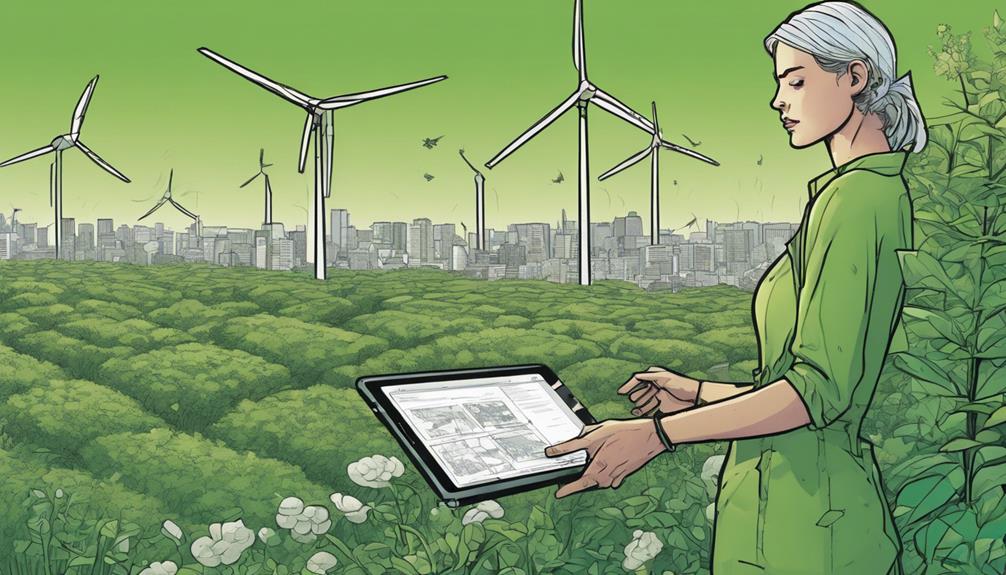
How do local regulations impact your plans to install a wind turbine in your garden?
Before you start digging, it's crucial to check if you need permits to install a wind turbine in your garden. You'll also need to obtain permission from your homeowner's association (HOA) or local authorities before proceeding with installation. Some areas have height restrictions for wind turbines, so make sure you comply with zoning ordinances.
Additionally, consider noise limitations in residential areas. You don't want to disturb your neighbors or violate local noise regulations. Address any concerns from neighbors or local authorities before installing your turbine. Understanding and adhering to regulations and permissions is vital to the successful installation of a wind turbine in your garden.
Don't assume that local regulations won't apply to your project. Take the time to research and comply with all requirements. It may seem like a hassle, but it's better to be safe than sorry. By navigating regulations and permissions correctly, you can avoid costly mistakes and ensure a smooth installation process for your wind turbine.
Choosing the Right Turbine for You
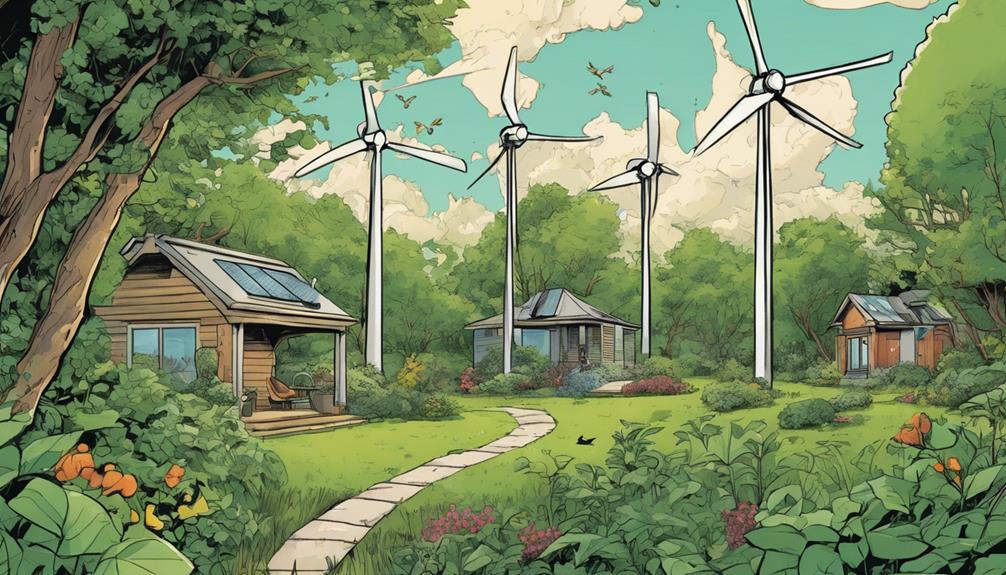
Selecting the appropriate wind turbine for your garden involves weighing several key factors to make sure you get the most out of your investment. You need to take into account your energy needs, wind speeds, and location to ensure the turbine you choose is suitable for your property.
Here are a few key factors to keep in mind:
- Wind speeds: Choose a turbine designed for your garden's wind speeds, whether they're high or low.
- Energy needs: Select a turbine that can meet your energy requirements, whether you're looking to power your entire home or just supplement your energy usage.
- Location: Evaluate the visual impact, noise levels, and maintenance requirements of different turbine models based on your garden's layout and surroundings.
- Turbine type: Research horizontal axis, vertical axis, bladeless, and other innovative designs to find the best fit for your urban or residential setting.
Maximizing Energy Output and Savings
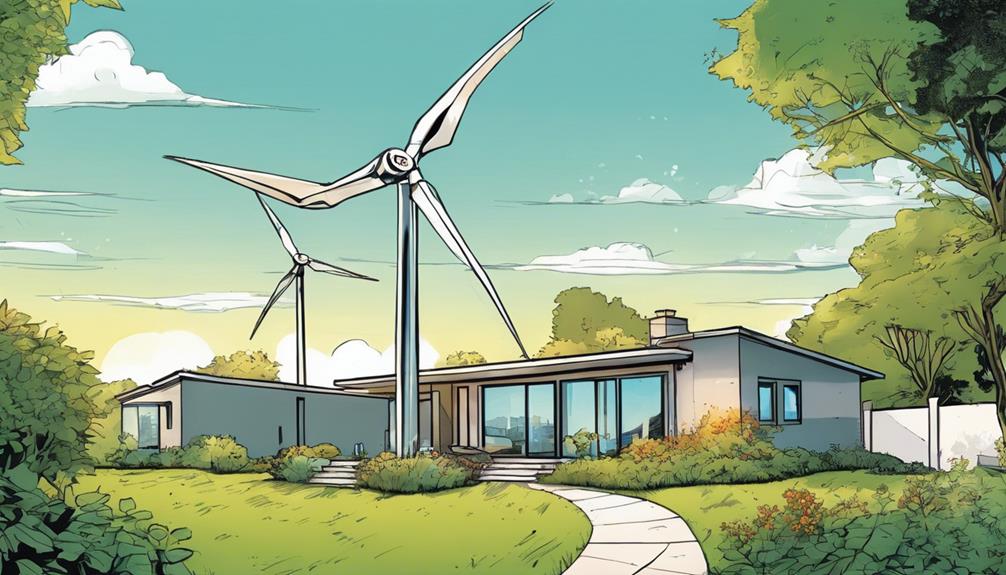
By selecting the appropriate turbine and fine-tuning its placement, you can maximize your energy production and start reaping the financial advantages of wind power in your garden. A well-planned wind turbine garden can notably decrease your electricity bills by harnessing wind energy for power generation. To achieve this, it is crucial to choose the right turbine size and position it in an area with ideal wind conditions.
| Fine-tuning Factor | Advantages |
|---|---|
| Suitable Turbine Size | Boosts energy output and minimizes wear and tear |
| Ideal Location | Optimizes wind energy utilization and reduces noise pollution |
| Renewable Energy System | Helps in reducing carbon footprint and environmental impact |
Integrating Wind With Solar Power Systems
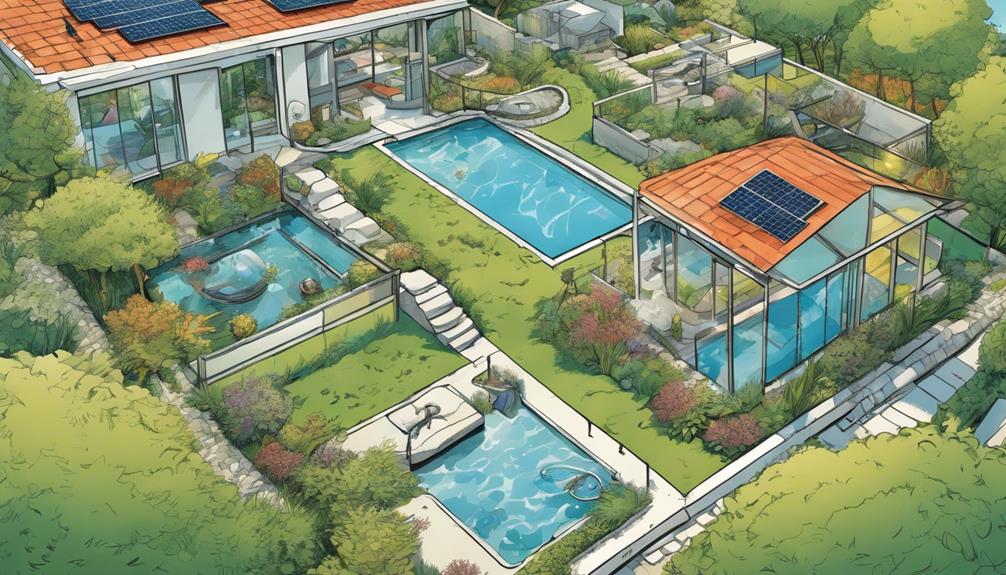
You can greatly enhance your renewable energy production by combining wind turbines with solar panels in a hybrid system, ensuring a continuous energy supply throughout the day and night. This integration takes advantage of the strengths of both sources, providing a reliable and efficient energy output.
Here are some benefits of integrating wind with solar power systems:
- Complementary energy production: Wind energy production is generally higher at night and during stormy weather, complementing solar power generation.
- Increased energy efficiency: Hybrid wind and solar systems offer increased reliability and energy efficiency for residential and commercial applications.
- Maximized renewable energy production: Integrating wind turbines with solar panels can maximize renewable energy production and reduce reliance on the grid.
- Enhanced sustainability: The synergy between wind and solar power systems can enhance overall sustainability and environmental benefits.
Frequently Asked Questions
What Are the Benefits of Wind Turbines?
You're considering wind turbines and wondering what's in it for you. Well, they provide clean energy, lower bills, and increase property value while promoting energy independence and reducing carbon emissions – a win-win for you and the planet!
What Are the 3 Pros and Cons of Wind Turbines?
You'll be amazed to know that a single wind turbine can power over 1,400 homes! Now, let's explore the 3 pros and cons of wind turbines: pros include clean energy, reduced carbon footprint, and lower bills, while cons include high installation costs, intermittent wind supply, and visual/noise impacts.
Is It Worth Having a Wind Turbine at Home?
You're wondering if it's worth having a wind turbine at home? Considering the potential annual savings and reduced carbon footprint, it's definitely worth exploring, especially with federal tax credits available to offset the initial investment.
How Are Wind Turbines Good for the Environment?
As you stand amidst the rustling leaves, feeling the gentle breeze, you're harnessing nature's power. You're reducing your carbon footprint, preserving natural resources, and promoting a sustainable future, all while enjoying the serenity of a cleaner environment.
Conclusion
As you stand in your wind turbine garden, the whirring blades spinning above you like a chorus of wings, you're harnessing the power of the air to fuel your life.
Like a modern-day Don Quixote, you're tilting at the windmills of energy independence, and winning.
With every rotation, you're generating clean energy, reducing your carbon footprint, and saving money.
Your wind turbine garden is a beacon of sustainability, shining bright for all to see.

